Detailed Barcelona Architecture Guide

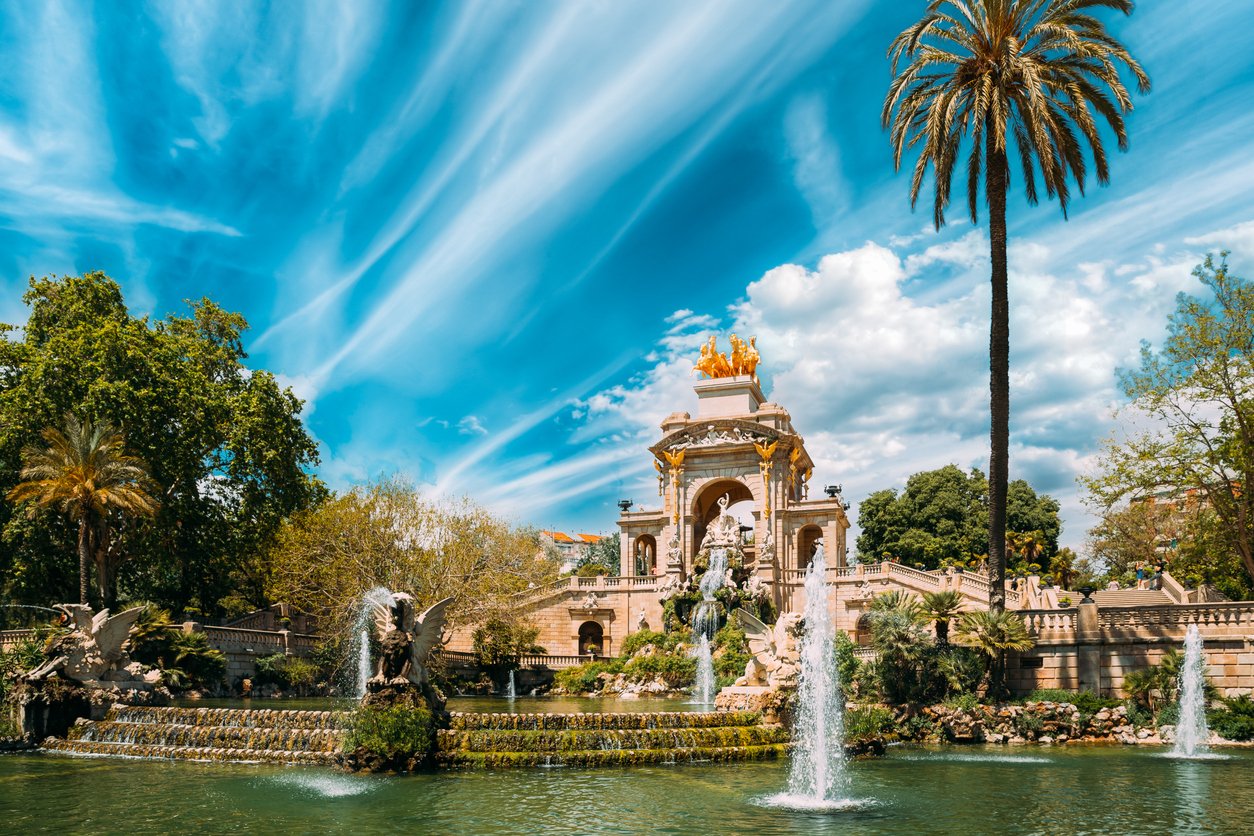
Barcelona has everything. It’s where history and modernity meet in a stunning architectural landscape. Its buildings tell a story that spans centuries, combining Gothic, Romanesque, and modern influences into one cohesive cityscape.
At the heart of this story is Modernisme, a movement from the late 19th and early 20th centuries that shaped Barcelona’s unique identity. Architects like Gaudí, Domènech i Montaner, and Puig i Cadafalch created some of the most iconic works, with flowing lines, bold designs, and vibrant mosaics. Today, modern architecture stands alongside these historic landmarks, with sleek, sustainable buildings adding even more charm to the city. You simply can’t visit Barcelona without experiencing these masterpieces.
But remember—if the typical “must-see” places aren’t your thing, that’s okay. Read on and discover which ones fit your style. With so much to see in Barcelona, don’t be afraid to pick and choose what inspires you most!
Brief History of Barcelona’s Architecture
Barcelona’s architectural history is as vibrant and varied as the city itself. It began with the Romans, whose remnants can still be seen in the old city walls. The medieval period left a deep mark, especially in the Gothic Quarter, home to landmarks like Santa Maria del Mar and the Barcelona Cathedral, with their grand arches and intricate stonework.
In the 19th century, the city expanded, and architect Ildefons Cerdà's grid-like Eixample district allowed for the rise of the Modernisme movement. Architects like Gaudí and Domènech i Montaner created the colorful, organic designs that now define Barcelona’s skyline. Today, the city continues to blend its rich history with modern innovation.
Antoni Gaudí
Antoni Gaudí is the most iconic figure in Barcelona’s architectural landscape, and his work is synonymous with the city itself. Antoni Gaudí was a leader of the Modernisme movement. His designs are known for their flowing shapes, bold use of color, and inspiration drawn from nature. Gaudí’s work goes beyond aesthetics; he used innovative engineering techniques that were ahead of his time.
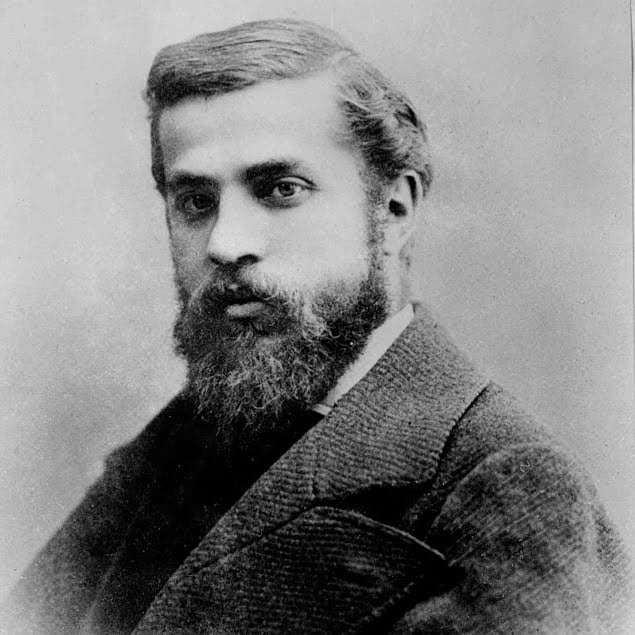
His buildings feel almost alive, with organic forms and natural motifs like the tree-like columns of the Sagrada Familia. Nature was his constant muse, and you can see this connection in every detail. Although his designs were groundbreaking, Gaudí still embraced tradition, often incorporating religious symbolism. His influence is deeply woven into Barcelona’s architectural identity, making him inseparable from the city’s character.
1. La Sagrada Familia
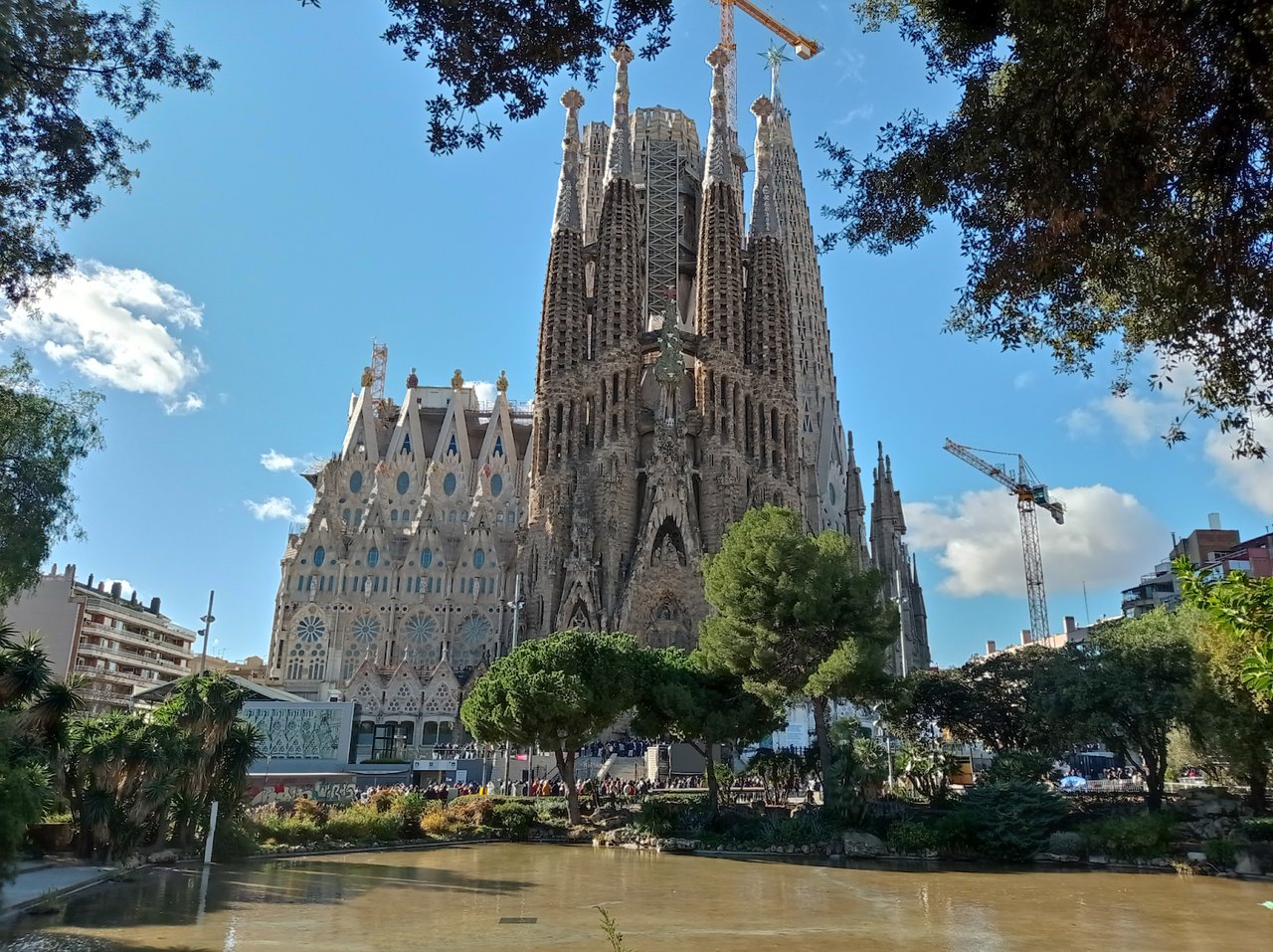
La Sagrada Familia is Antoni Gaudí’s most famous and ambitious work. Construction began in 1882, and remarkably, it remains unfinished to this day, with an expected completion date of 2026. This towering basilica is a masterpiece of architectural innovation, blending Gothic and modernist styles into something entirely unique.
The structure is famous for its intricate facades, each telling a different part of the Christian story. The Nativity Facade is full of life and detail, while the Passion Facade has stark, angular designs to reflect the suffering of Christ. Gaudí designed the basilica with 18 spires, representing the Twelve Apostles, the Virgin Mary, the four Evangelists, and Jesus Christ. When completed, it will be the tallest religious building in Europe.
Inside, the basilica feels almost otherworldly. Gaudí’s use of natural light is remarkable, with colorful stained glass filling the interior with soft, shifting hues. The tree-like columns rise to the ceiling, branching out like a forest canopy, creating a feeling of being in a sacred grove.
2. Park Güell
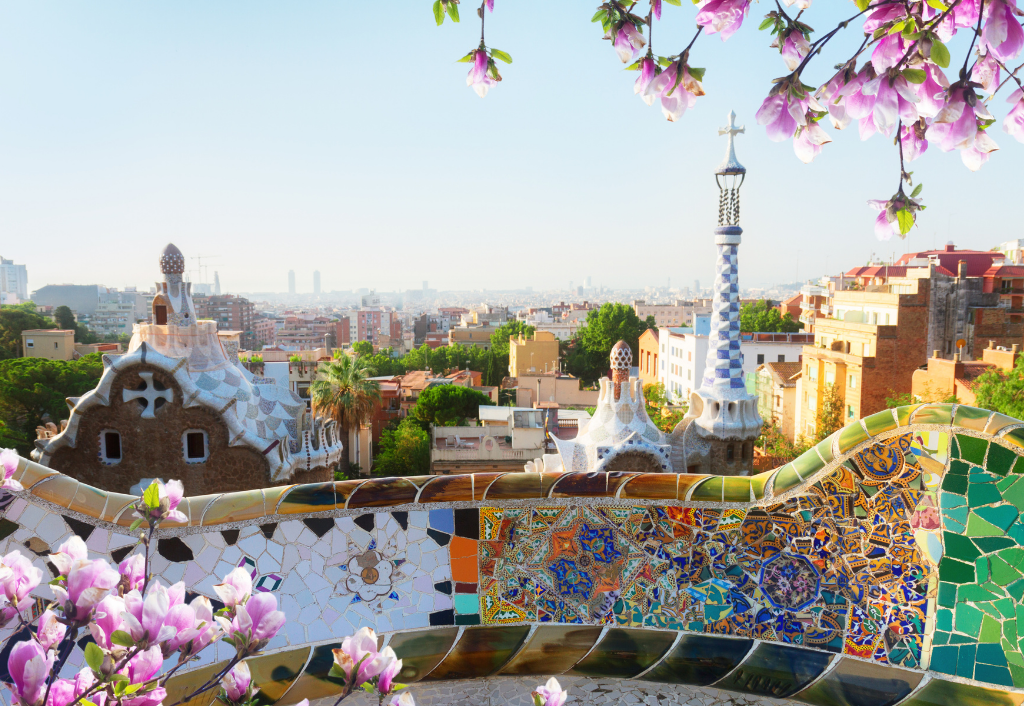
Park Güell is one of Antoni Gaudí’s most whimsical creations. Built between 1900 and 1914, this public park blends architecture and nature in a way that feels almost magical. Originally planned as a housing development, it became a public space after the project failed to sell. Gaudí used his signature mosaic technique, Trencadís, to cover benches, walls, and sculptures, creating vibrant, colorful patterns throughout the park.
The park’s most famous feature is the iconic serpentine bench, which winds around the main terrace, offering stunning views of Barcelona. Gaudí’s love of natural forms is evident in every detail—from the animal sculptures to the twisting stone columns that resemble tree trunks. Park Güell is not only a showcase of Gaudí’s creativity but also a UNESCO World Heritage Site.
3. Casa Batlló
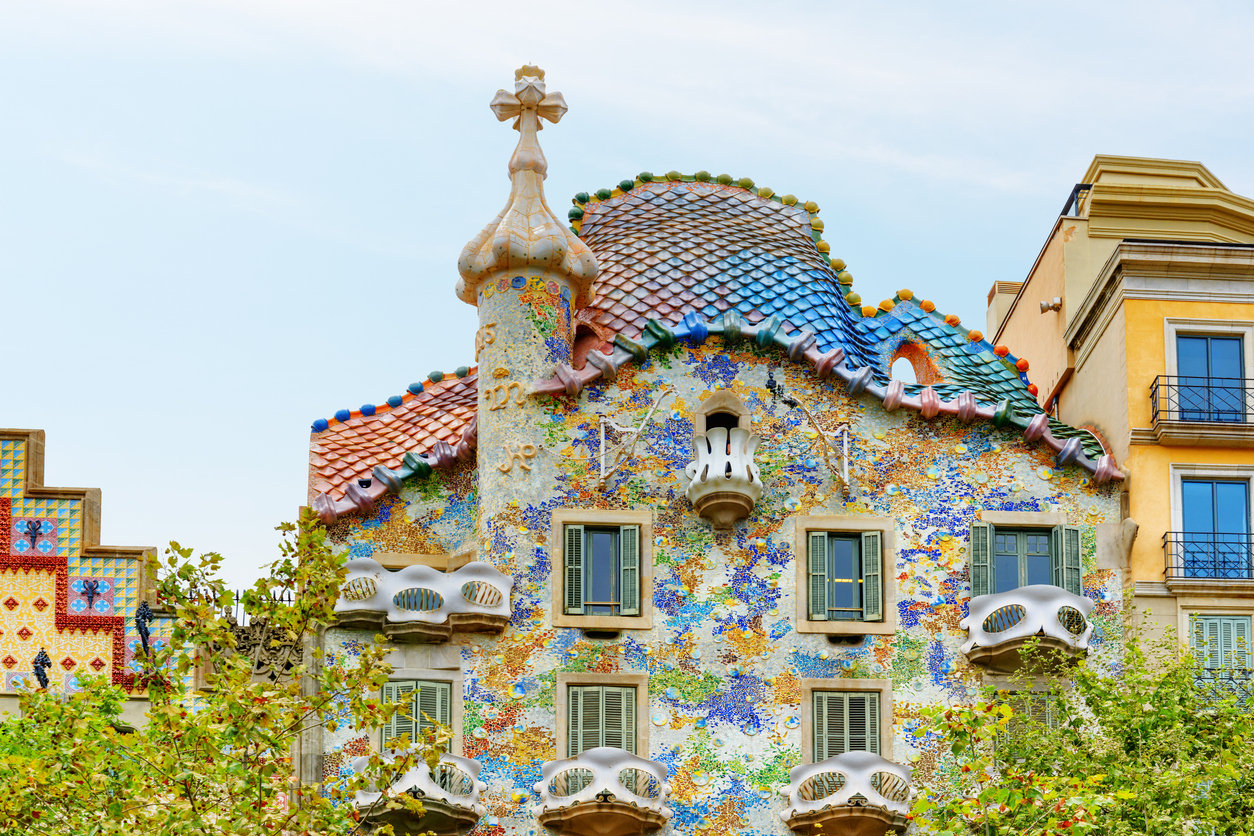
Casa Batlló is one of Gaudí’s most imaginative works, located on the famous Passeig de Gràcia. Designed in 1904, the building is a prime example of Gaudí’s ability to merge art and architecture. The facade stands out with its colorful mosaic tiles, undulating lines, and bone-like balconies, giving it the nickname “House of Bones.” The curved roof, with its scales and a cross-topped turret, is said to represent the legend of Saint George and the dragon.
Inside, Casa Batlló is just as stunning. Gaudí designed every element, from the flowing shapes of the ceilings to the intricate stained glass windows. The central light well, tiled in varying shades of blue, floods the interior with natural light. Casa Batlló is a testament to Gaudí’s creativity and his ability to transform ordinary structures into living, breathing works of art.
4. Casa Milà
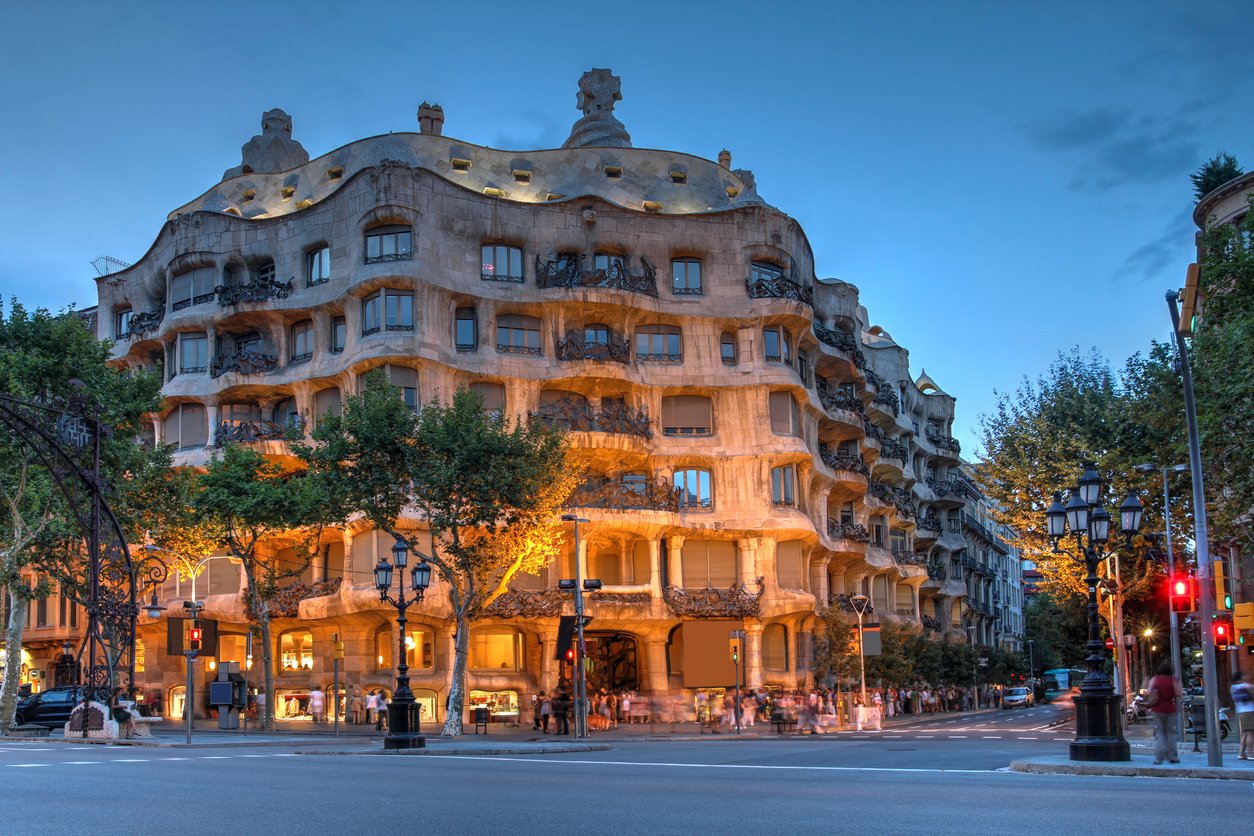
Casa Milà, often called La Pedrera (The Stone Quarry), was designed by Gaudí between 1906 and 1912. The building's undulating stone facade and wrought iron balconies make it one of the most recognizable landmarks in Barcelona. Unlike traditional buildings, Casa Milà has no straight lines, and its flowing, organic design mimics the natural forms Gaudí admired so much.
One of the building’s most striking features is the rooftop terrace, with its whimsical chimneys that look like abstract sculptures. Inside, Gaudí’s innovative approach continues with an open floor plan and natural light pouring into the apartments through central courtyards. Casa Milà is another UNESCO World Heritage Site, celebrated for its groundbreaking design and its role in the Modernisme movement.
Lluís Domènech i Montaner
Lluís Domènech i Montaner was one of the leading figures of the Modernisme movement in Catalonia, alongside Antoni Gaudí. His architectural style combined traditional elements with new, innovative techniques, often using ornamentation to express cultural identity. While Gaudí was known for his organic, nature-inspired forms, Domènech i Montaner leaned heavily into the use of intricate detailing and bold structures to create buildings that were as functional as they were beautiful.
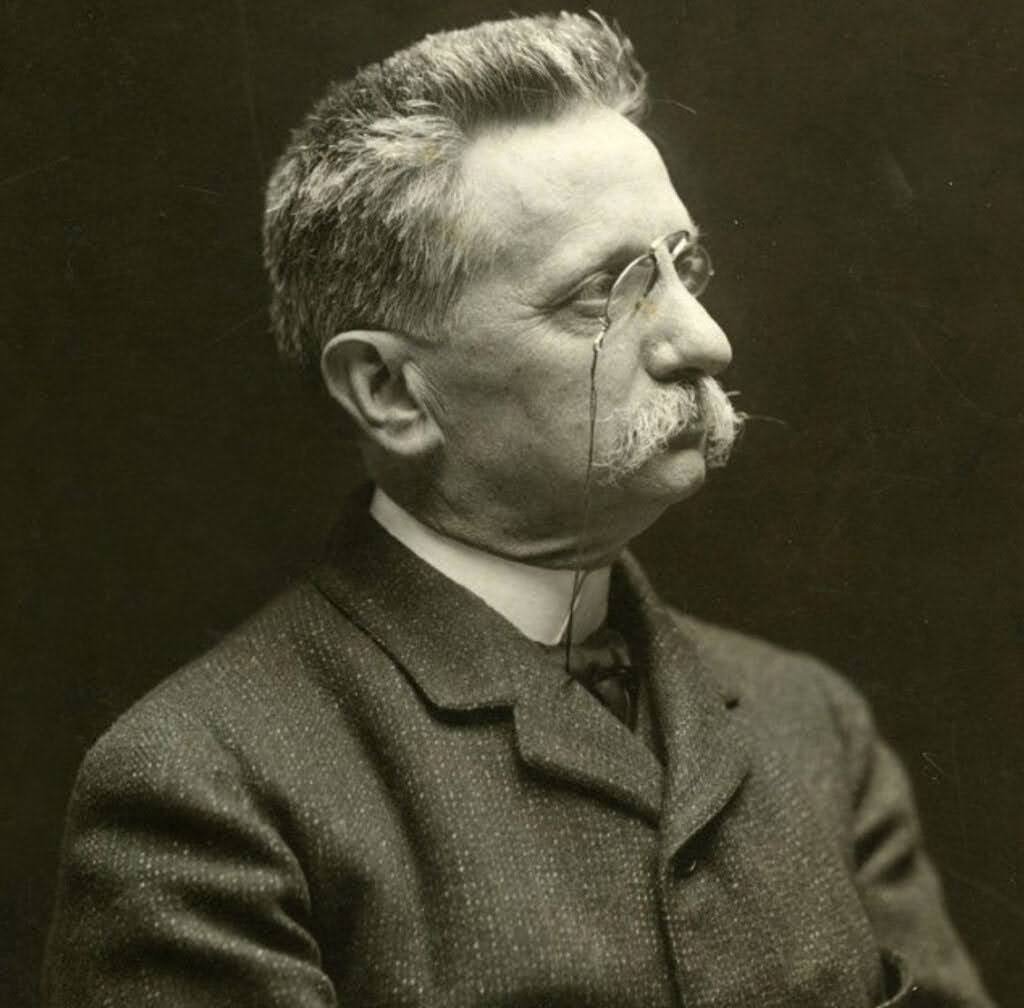
Domènech's work goes beyond mere decoration. He was deeply committed to Catalan nationalism, and his buildings often reflect this pride in local culture. His most famous works, such as the Palau de la Música Catalana and the Hospital de Sant Pau, are celebrated not only for their architectural beauty but also for their historical and cultural significance. Domènech’s influence on Barcelona’s cityscape is immense, and his work remains a key part of the city’s architectural identity.
1. Palau de la Música Catalana
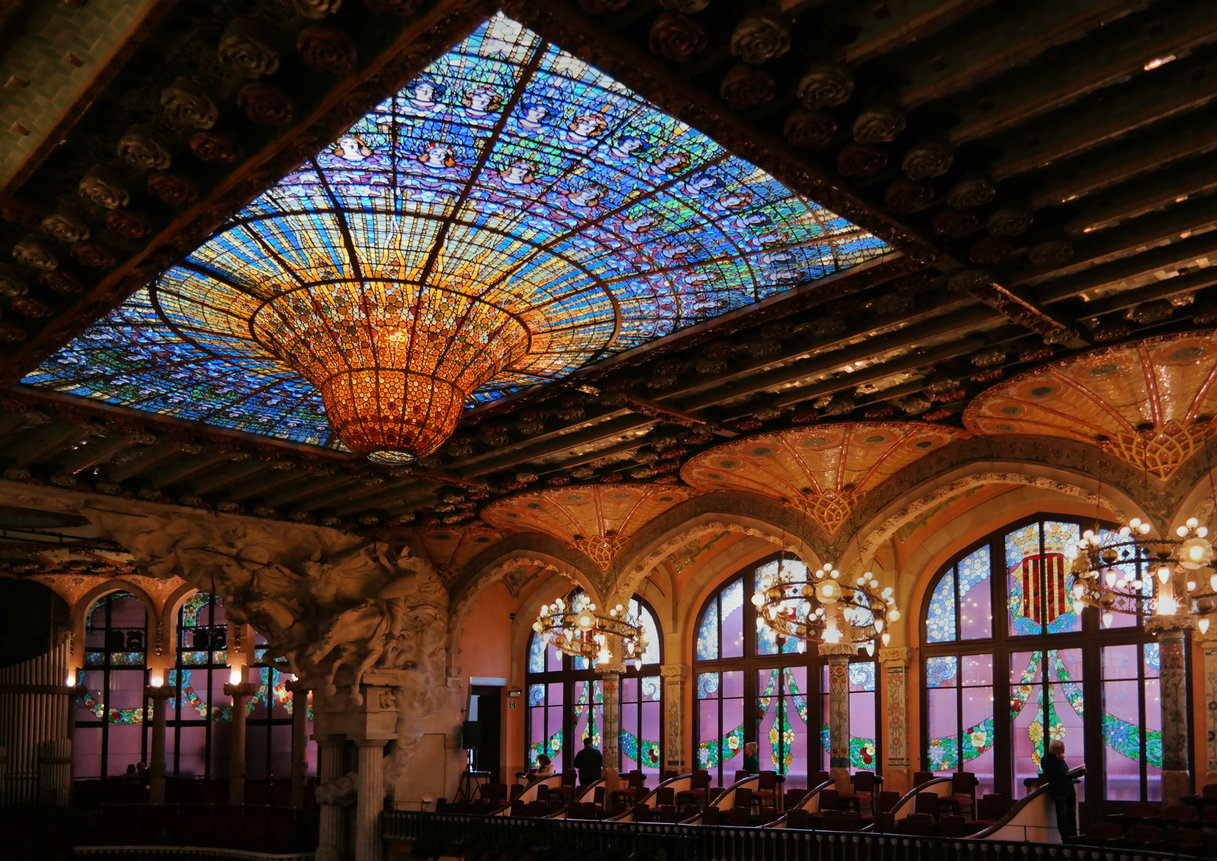
The Palau de la Música Catalana, designed by Lluís Domènech i Montaner and completed in 1908, is one of the most breathtaking concert halls in the world. Located in the heart of Barcelona, this UNESCO World Heritage Site is a true masterpiece of Modernisme. The building’s facade is adorned with intricate sculptures, mosaics, and stained glass. It blends Catalan folk art with the bold architectural style of the time.
Inside, the concert hall is just as spectacular. A massive stained-glass skylight floods the space with natural light, creating an almost otherworldly atmosphere. The hall is filled with ornate details, from flowing columns to sculptures of muses surrounding the stage. It was designed to celebrate Catalan culture, and its vibrant, decorative style reflects that pride. The Palau de la Música Catalana isn’t just a venue for music—it’s an architectural treasure that embodies the spirit of Modernisme.
2. Hospital de Sant Pau
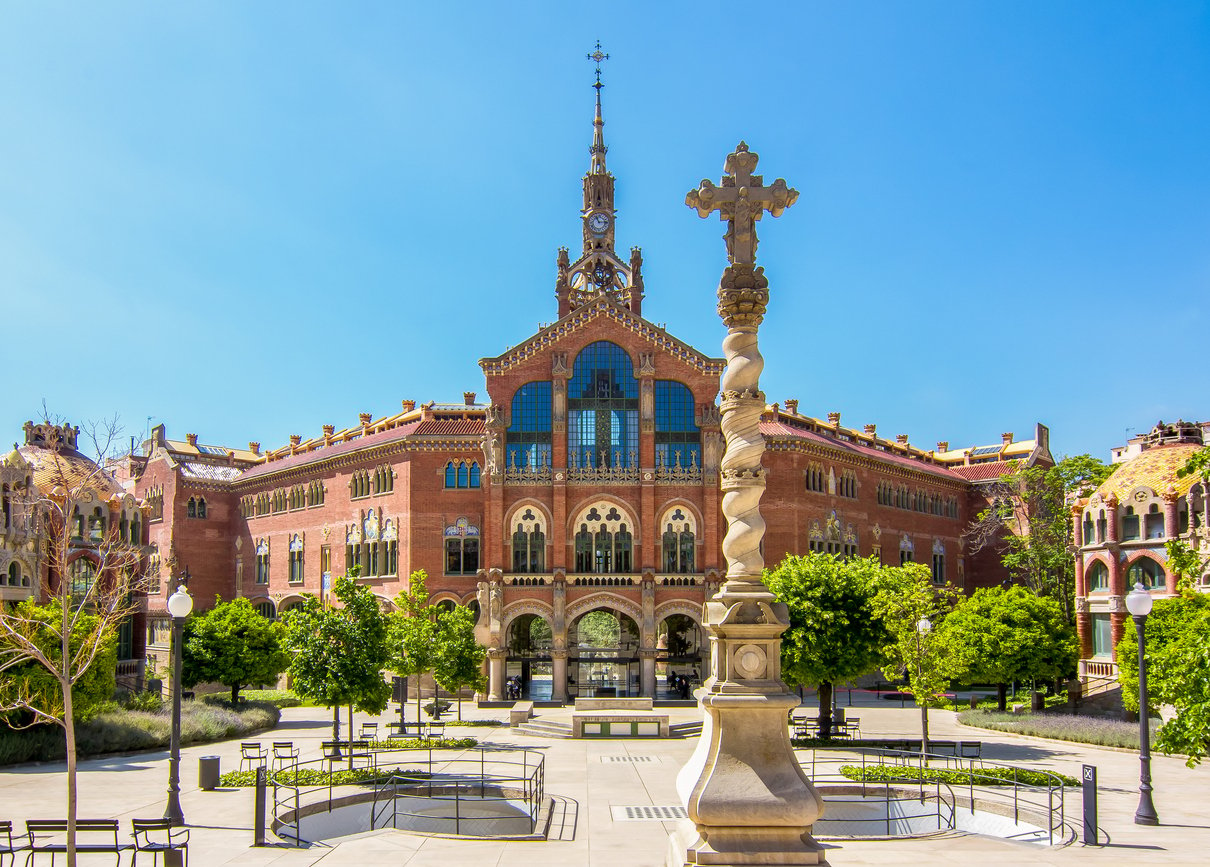
The Hospital de Sant Pau, designed by Lluís Domènech i Montaner, is a stunning example of how function and beauty can coexist in architecture. Completed in 1930, this hospital complex is a masterpiece of Modernisme and is also a UNESCO World Heritage Site. Domènech envisioned it as more than just a medical facility—he wanted it to be a place that uplifted the spirit of both patients and staff.
The complex consists of several interconnected pavilions, each adorned with colorful mosaics, intricate sculptures, and stained glass. The layout was carefully planned to allow for plenty of natural light and green spaces, promoting a healing environment. The use of bold decorative elements reflects Domènech’s deep commitment to Catalan culture. It makes the hospital as much a celebration of art as it is a medical facility. Today, parts of the hospital have been transformed into a cultural center and museum, but its architectural brilliance remains a key part of Barcelona’s heritage.
Josep Puig i Cadafalch
Josep Puig i Cadafalch was a key figure in the Modernisme movement, alongside Gaudí and Domènech i Montaner, but his style often blended elements of both Gothic and Renaissance architecture. Unlike many of his contemporaries, Puig i Cadafalch was not only an architect but also a politician and historian, deeply involved in Catalan nationalism. His work often reflected a desire to preserve and celebrate Catalonia’s heritage, while also pushing architectural boundaries.
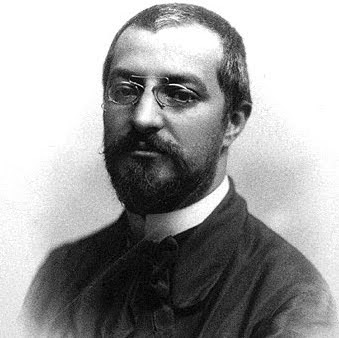
Puig i Cadafalch’s buildings are characterized by their use of medieval-inspired elements, combined with modernist innovations. He is best known for works like Casa Amatller and Casa de les Punxes, where his love for Gothic and Romanesque details shines through. His designs often incorporate ornamental facades, elaborate ironwork, and pointed arches. It blends historical references with the creativity of Modernisme. Beyond his architectural achievements, Puig i Cadafalch’s influence on Catalan culture and politics makes him a central figure in Barcelona’s history.
1. Casa Amatller
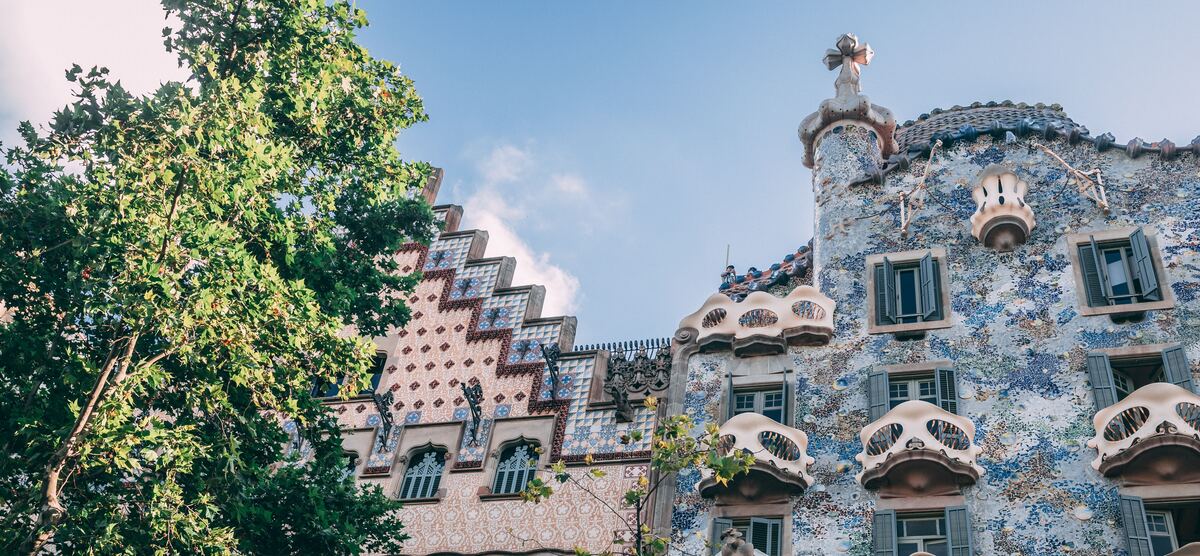
Casa Amatller, designed by Josep Puig i Cadafalch in 1900, is one of the standout buildings on Passeig de Gràcia. This modernist gem was commissioned by chocolatier Antoni Amatller, and the design reflects a unique blend of Gothic and Dutch Renaissance influences. The stepped gable at the top of the building, a rare feature in Barcelona, immediately sets it apart from the other structures along the avenue.
The facade of Casa Amatller is adorned with intricate sculptures and decorative elements that reference both the medieval period and Catalan culture. Inside, Puig i Cadafalch’s attention to detail continues with stained glass windows, ornate ceilings, and a grand staircase.
Alongside Casa Batlló and Casa Lleó Morera, Casa Amatller forms part of the famous "Block of Discord," where competing modernist styles make this area of the city a true architectural showcase.
2. Casa de les Punxes
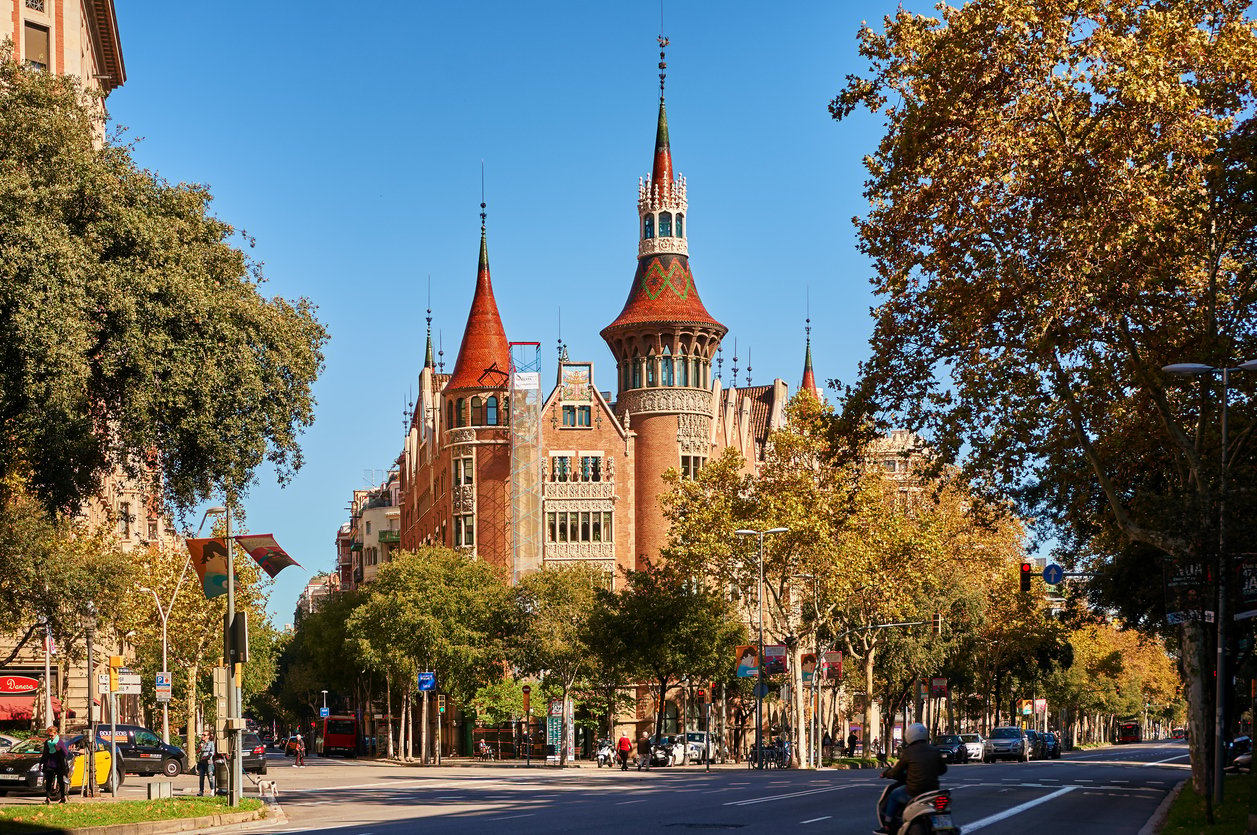
Designed by Josep Puig i Cadafalch in 1905, Casa de les Punxes stands out as a striking mix of medieval and modernist influences. The building, which resembles a castle with its pointed towers (or “punxes”), was commissioned by the Terradas family and was intended as a residence for the sisters of the family. Its unique design was inspired by Gothic architecture, and its fairy-tale-like appearance makes it one of the most iconic structures in Barcelona.
Casa de les Punxes features stunning decorative elements, including intricate ironwork, stained glass, and detailed mosaics. The facade is adorned with symbols of Catalan legends and folklore, reflecting Puig i Cadafalch’s commitment to Catalan identity.
The central tower, with its steeply pitched roof, adds a dramatic flair to the structure. Today, Casa de les Punxes is open to the public.
Romanesque and Gothic Styles in Barcelona Architecture
Barcelona’s architectural roots are deeply tied to the Romanesque and Gothic styles, which shaped the city’s medieval identity long before the rise of modernist movements. The Romanesque style, seen in Barcelona’s oldest churches, is characterized by thick walls, semi-circular arches, and minimal ornamentation, reflecting the influence of early Christian architecture. As the city evolved, the Gothic style took over during the medieval period, leaving a lasting impact on Barcelona’s skyline.
Gothic architecture introduced more elaborate and vertical designs, with pointed arches, ribbed vaults, and large stained glass windows that allowed more light to flood into buildings. The Gothic Quarter is the best place to experience these structures, with landmarks like the Barcelona Cathedral and Santa Maria del Mar showcasing the grandeur and detail of Gothic design.
1. Santa Maria del Mar
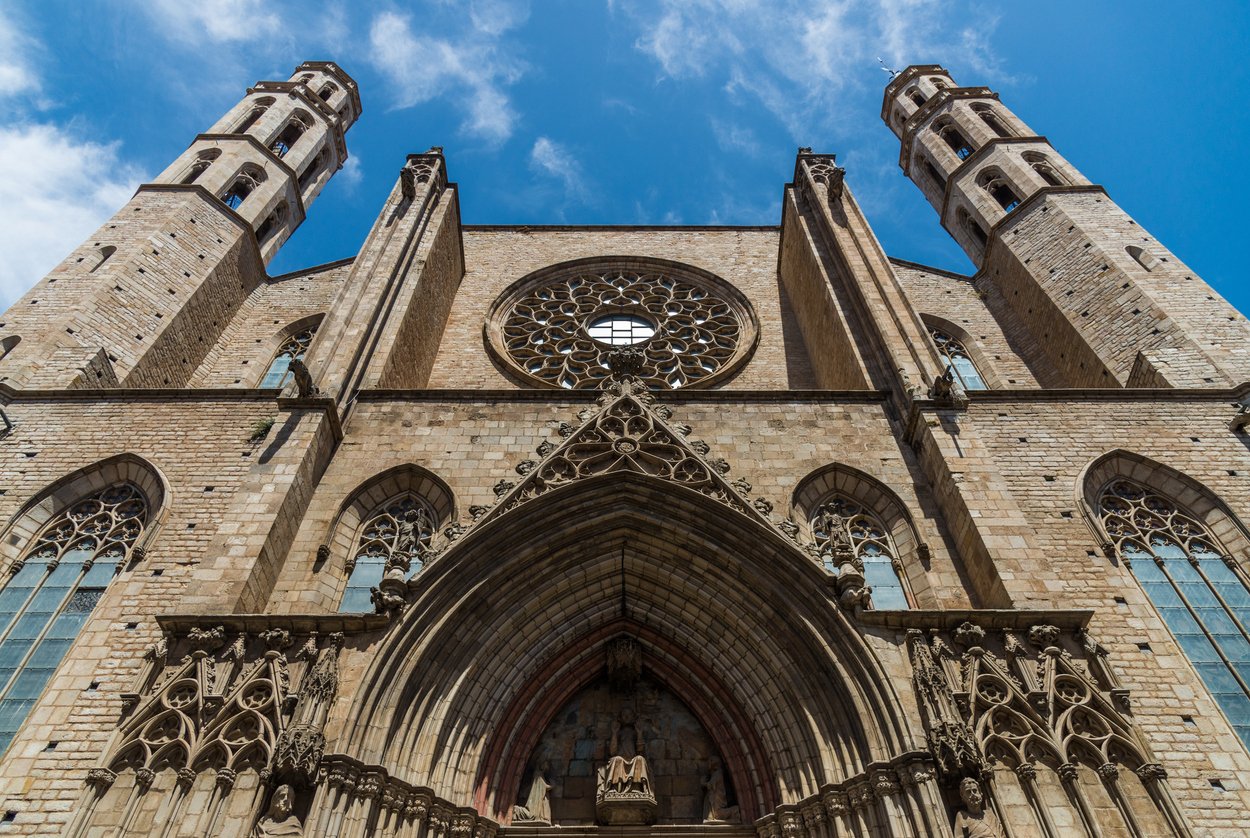
Santa Maria del Mar is one of the finest examples of Catalan Gothic architecture in Barcelona. Completed in 1383, this stunning basilica is located in the heart of the El Born district. Known as the “Cathedral of the Sea,” it was built by the local seafaring community and remains a symbol of their devotion and effort.
Unlike many Gothic churches, Santa Maria del Mar has a more restrained and harmonious design. Its exterior may seem austere compared to other Gothic cathedrals, but the interior reveals a vast, elegant space supported by slender columns that give the church an airy, open feel.
The large rose window and towering stained glass windows flood the space with light, creating a serene and uplifting atmosphere. This combination of simplicity and grandeur makes Santa Maria del Mar a beloved landmark in Barcelona and a key part of the city’s rich Gothic heritage.
2. Barcelona Cathedral
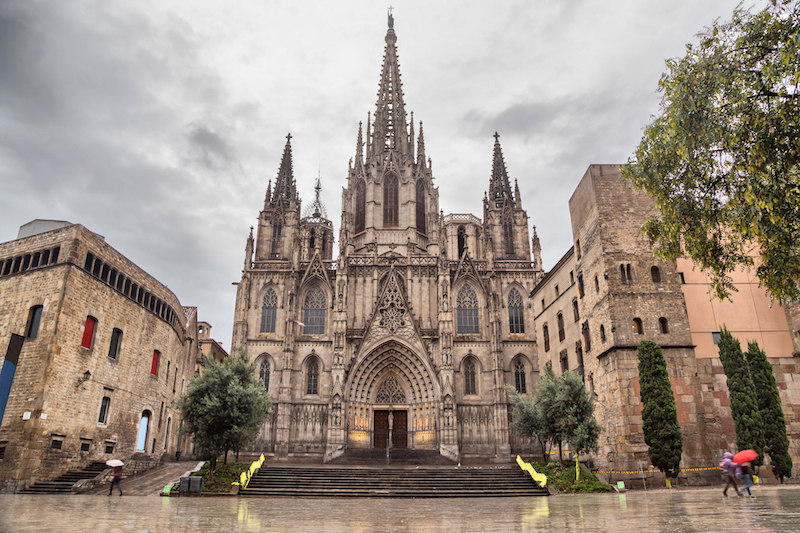
The Barcelona Cathedral, officially known as the Cathedral of the Holy Cross and Saint Eulalia, is one of the city’s most important Gothic landmarks. Built between the 13th and 15th centuries, it is located in the heart of the Gothic Quarter. The cathedral is dedicated to Saint Eulalia, a young martyr who became one of Barcelona’s patron saints.
The exterior of the cathedral, with its towering spires and detailed stone carvings, reflects the grandeur of Gothic architecture. The intricate facade was completed in the 19th century, but inside, the cathedral’s medieval roots shine through. The interior features soaring vaulted ceilings, stunning stained glass windows, and a peaceful cloister filled with fountains and greenery. One of its unique elements is the crypt of Saint Eulalia, located below the main altar, where the saint’s remains are housed.
The Barcelona Cathedral remains a vital part of the city’s religious and cultural life, hosting regular services and drawing visitors from around the world to admire its architectural beauty.
Contemporary Architecture in Barcelona
Barcelona’s architectural story doesn’t end with its historic landmarks; the city is also a hub for contemporary design and innovation. In recent decades, Barcelona has embraced cutting-edge architecture that focuses on sustainability, modern materials, and bold designs. Buildings like Jean Nouvel’s Torre Agbar and Herzog & de Meuron’s Museu Blau are prime examples of how the city continues to push architectural boundaries while respecting its historical roots.
1. Torre Agbar
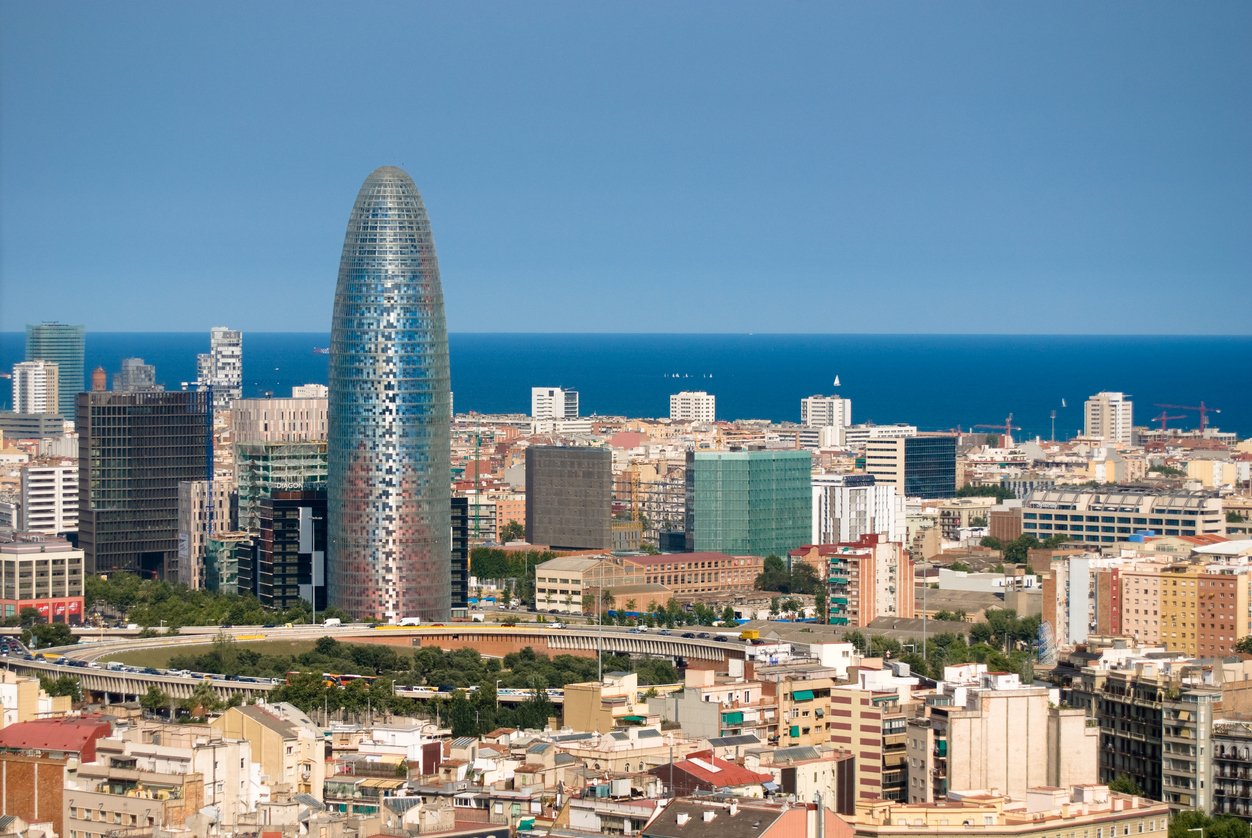
The Torre Agbar, designed by French architect Jean Nouvel, is one of Barcelona’s most iconic contemporary buildings. Completed in 2005, this 38-story skyscraper stands out with its unique shape, often compared to a geyser or a bullet. Its glass facade is made up of thousands of color-shifting panels, giving the building a vibrant, constantly changing appearance, especially when illuminated at night.
The tower’s design was inspired by the shapes of Montserrat mountain and the fluid movement of water, reflecting Nouvel’s innovative approach to architecture. Standing at 144 meters tall, Torre Agbar represents Barcelona’s modern architectural landscape and its commitment to combining creativity with sustainable, energy-efficient design.
2. Museu Blau (Forum Building)
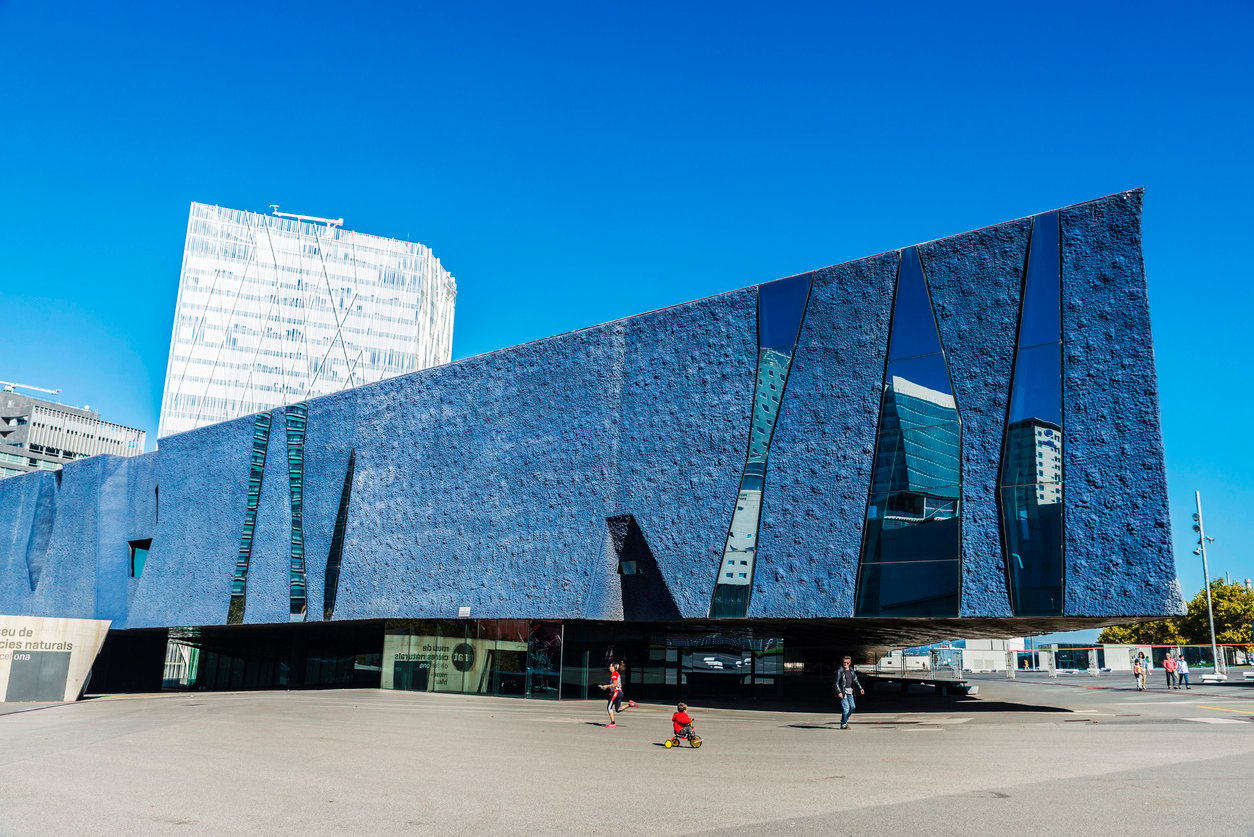
The Museu Blau, also known as the Forum Building, was designed by Swiss architects Herzog & de Meuron and completed in 2004. This striking triangular structure, located near the sea in the Forum area, stands out with its blue concrete facade and reflective surfaces that create a visually dynamic effect. The building’s geometric shape and bold design represent a modern architectural landmark in Barcelona.
Inside, the Museu Blau houses the Museum of Natural Sciences, with exhibitions dedicated to the natural world. The innovative design of the building not only makes it a functional museum but also a standout piece of high-tech architecture that reflects Barcelona’s commitment to blending cultural spaces with contemporary design.
3. Media-TIC
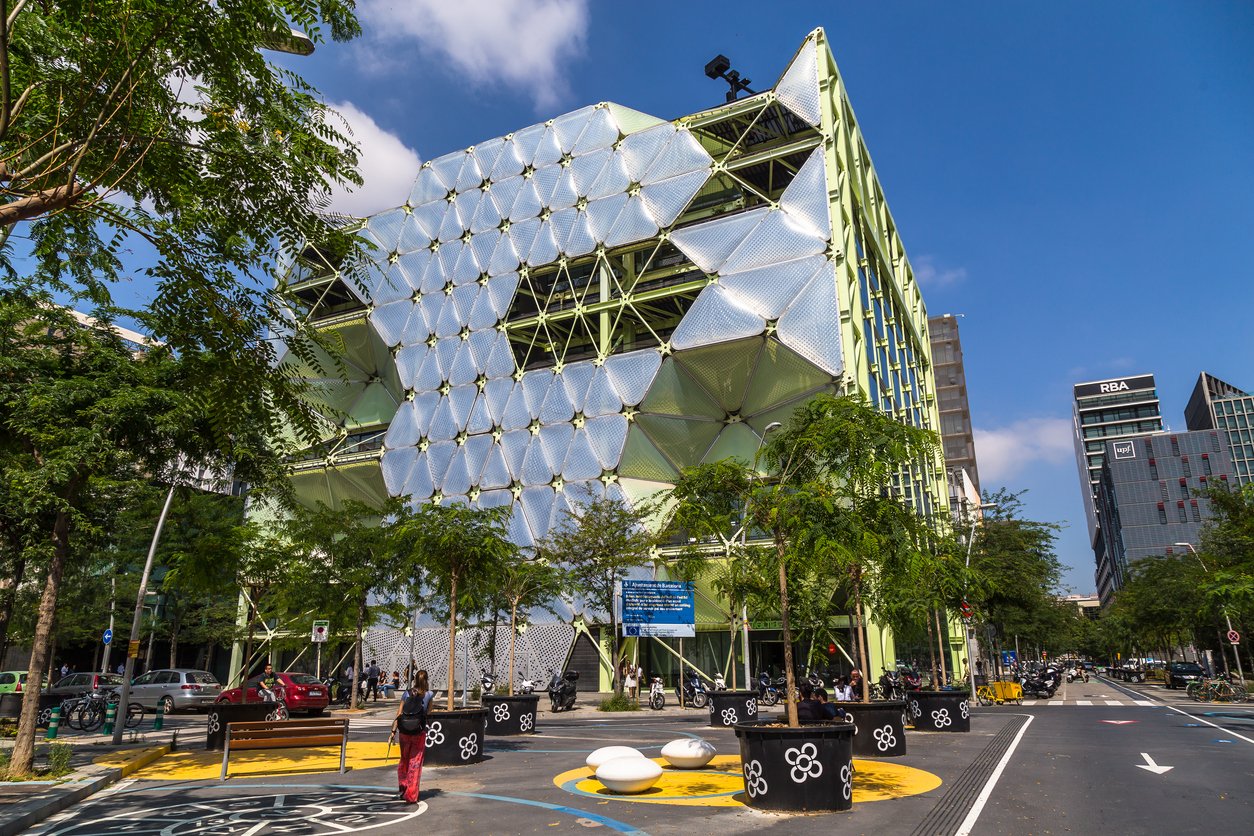
The Media-TIC building, designed by Enric Ruiz-Geli, is a striking example of eco-friendly, futuristic architecture. Completed in 2010, its standout feature is a translucent, inflatable facade made from ETFE (Ethylene Tetrafluor Ethylene). This unique skin reacts to sunlight and temperature changes, helping to regulate the building’s energy use and making it highly sustainable.
Designed as a space for technology and innovation, Media-TIC blends cutting-edge design with functionality. The building’s adaptive facade, combined with its focus on reducing environmental impact, makes it one of Barcelona’s most notable examples of modern, high-tech architecture.
Hidden Architectural Gems in Barcelona
Barcelona is full of iconic buildings, but it also hides some lesser-known architectural treasures that showcase the city’s diversity. These hidden gems offer a glimpse into different styles and periods that go beyond the well-trodden tourist paths.
La Ricarda
La Ricarda, designed by Antonio Bonet in the mid-20th century, is a masterpiece of modernist architecture. Built as a private residence, it’s celebrated for its elegant design and exceptional acoustics. It is a cultural hub during Spain’s political repression. The house seamlessly blends indoor and outdoor spaces, with large windows that bring nature into the heart of the home.
Walden 7
Designed by Ricardo Bofill, Walden 7 is a futuristic, postmodern residential complex made from repurposed materials. Its bold design features a maze-like structure with interconnected courtyards and terraces, creating a unique living space. The building's modular design and bright colors give it a sci-fi feel, standing out as one of Barcelona’s most unconventional and innovative structures.
Conclusion
Barcelona’s architecture is a perfect blend of history, creativity, and innovation. For sure, you won't get bored in this beautiful city. Beyond architecture, there are plenty of other attractions that highlight the city’s unique charm.
Visitors can explore Montjuïc, home to the Magic Fountain and several museums, or enjoy a relaxing day at Barceloneta Beach. Barcelona’s urban parks, like Parc de la Ciutadella and Parc del Laberint are stunning green spaces perfect for unwinding.
At BarcaTrips, we have all the information you need to make the most of your visit to Barcelona. Whether you're looking for detailed guides on architectural highlights, lesser-known spots, or insider tips on the best places to visit, we’ve got you covered.
FAQs
What architecture is Barcelona famous for?
Barcelona is known for Modernisme, especially Antoni Gaudí's iconic works like La Sagrada Familia and Park Güell. The city also features Gothic landmarks like the Barcelona Cathedral, that blend medieval and modernist styles.
Why is Barcelona so well designed?
Barcelona's design comes from the thoughtful urban planning of Ildefons Cerdà’s Eixample district and the creativity of modernist architects like Gaudí and Domènech i Montaner. The city balances historic preservation with modern innovation.
What is Catalan style of architecture?
Catalan Modernisme is a distinctive style marked by organic forms, mosaics, and bold designs, led by architects like Gaudí and Domènech i Montaner. It blends creativity with Catalan cultural identity.
Does Barcelona have old architecture?
Yes, Barcelona's Gothic Quarter showcases medieval architecture, including the Barcelona Cathedral and Santa Maria del Mar. The city also preserves Roman-era structures like its ancient walls.


